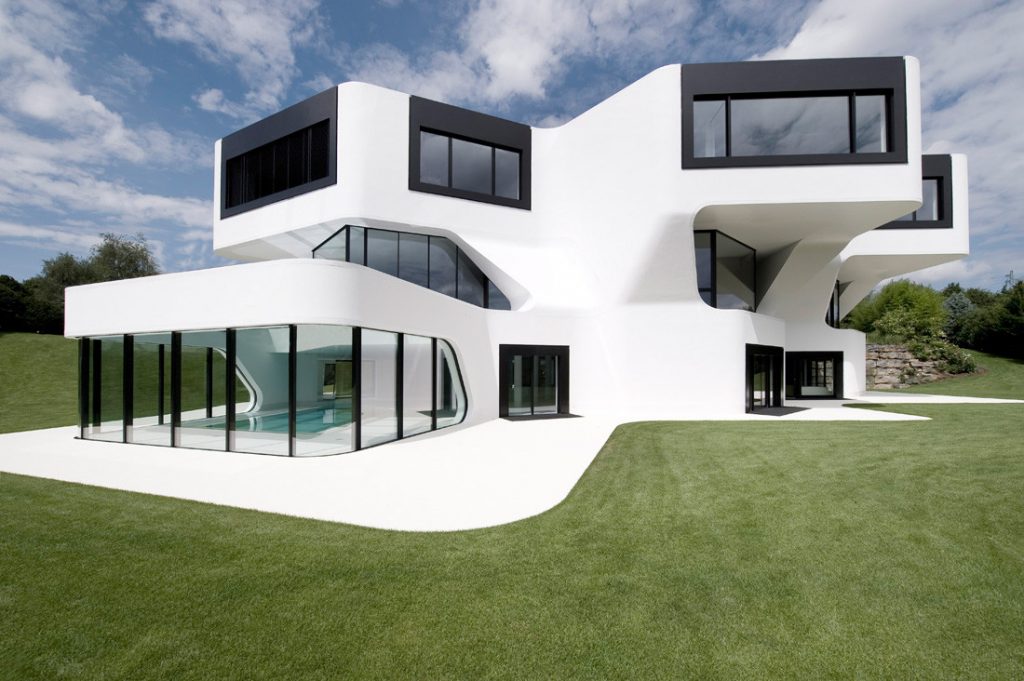Minimalist architecture is a design philosophy that embraces simplicity, functionality, and clean lines, often utilizing a “less is more” approach to create spaces that are visually appealing, uncluttered, and efficient. This style focuses on reducing unnecessary elements and emphasizing the beauty of simplicity. It emphasizes open spaces, natural light, and the use of materials that highlight both the form and function of the space.
In a world increasingly dominated by excess and complexity, minimalist architecture provides a refreshing escape. Whether it’s a small home, office space, or public building, minimalist design offers a harmonious balance between simplicity and functionality, creating an environment that is peaceful, efficient, and aesthetically pleasing.
In this article, we will explore the key principles of minimalist architecture, its history, its benefits, and how this design philosophy continues to influence modern architecture.
The History of Minimalist Architecture

Minimalism in architecture can be traced back to the early to mid-20th century, although its roots extend even further into various art and design movements. The Bauhaus school in Germany (1919-1933) was one of the early pioneers of minimalist design, emphasizing clean lines, functional designs, and the idea that form follows function. However, minimalist architecture as we know it today began to take shape in the 1960s and 1970s, largely influenced by movements in art, particularly minimalism in visual arts and sculpture.
Prominent architects like Ludwig Mies van der Rohe, Tadao Ando, and John Pawson are often credited with shaping modern minimalist architecture. They focused on creating spaces that eliminated unnecessary decoration and allowed the architecture itself to speak through its simplicity. The goal was to create spaces that were functional and aesthetically calming, using natural materials and subtle design elements.
Core Principles of Minimalist Architecture
Minimalist architecture is built upon a few core principles that guide its design and construction. These principles focus on simplicity, functionality, and the beauty of restraint.
1. Simplicity
At the heart of minimalist architecture is the principle of simplicity. This means stripping away anything superfluous, leaving only what is essential. The idea is that design should be elegant in its restraint. This simplicity is reflected in clean lines, unadorned surfaces, and an open layout.
In minimalist design, the focus is often on creating an environment with few distractions. Furniture and decorations are functional and streamlined, with no unnecessary ornamentation or excess. This simplicity allows the space itself to become a work of art, where every element serves a purpose.
2. Functionality
In minimalist architecture, form and function go hand in hand. Functional design is key—spaces are designed with practicality in mind while also keeping aesthetic qualities in mind. The goal is to create environments that are not only visually pleasing but also highly functional and efficient.
This principle can be seen in the use of modular furniture, multi-purpose spaces, and intelligent storage solutions. For instance, a minimalist living room may have clean lines with built-in shelving or hidden storage that minimizes clutter. The idea is that every element serves a purpose, making the most of every square foot of space.
3. Use of Natural Light
Natural light is an essential element of minimalist architecture. Large windows, open layouts, and strategic placement of windows allow natural light to flood the space, making rooms feel bright and open. Light is seen as a key design element, helping to create an atmosphere of serenity and calm.
In minimalist architecture, the relationship between the interior space and the outdoors is often emphasized. Walls of glass or large windows connect the indoors with the natural environment, providing a constant flow of light and creating a sense of harmony between the built environment and nature.
4. Open Space
Minimalism often emphasizes open floor plans, where rooms flow into one another with few partitions or barriers. This openness creates a sense of freedom and simplicity, where the space feels larger and more connected. The use of open spaces allows for a sense of calm, as it minimizes the feeling of being confined or overwhelmed by too many walls or details.
Open spaces can also create flexibility, allowing rooms to serve multiple purposes. For example, a minimalist living area may be adaptable for various functions, such as a workspace, relaxation area, or entertaining space.
5. Quality Over Quantity
Minimalist design places emphasis on using high-quality materials rather than relying on excessive decoration. Instead of overloading the space with furniture or accessories, the focus is on investing in fewer but better materials that make a strong impact. Natural materials such as wood, stone, concrete, and metal are frequently used for their timeless beauty and durability.
By focusing on quality, minimalist architecture encourages a more sustainable and thoughtful approach to construction and interior design. The materials used are often simple but refined, contributing to the overall aesthetic while offering long-lasting value.
Benefits of Minimalist Architecture
Minimalist architecture offers several benefits, both practical and psychological. Here are a few reasons why minimalist design is gaining popularity worldwide:
1. Clarity and Calmness
Minimalist spaces have the ability to promote a sense of calm and clarity. By eliminating visual clutter and excess, the design allows the mind to relax and focus. The simplicity of a minimalist room can reduce stress and create an environment conducive to relaxation and concentration.
For example, in a minimalist bedroom, the absence of unnecessary furniture or décor helps create a peaceful retreat that encourages restful sleep. Similarly, a minimalist office or workspace can promote productivity and focus by reducing distractions.
2. Maximized Functionality
With fewer decorative elements, minimalist architecture emphasizes the efficient use of space. This can result in smarter layouts and designs that are both visually appealing and highly functional. Modular furniture, built-in storage, and adaptable spaces allow homeowners to make the most of every inch of their living space.
3. Sustainability
Minimalist architecture is often associated with sustainable design. By focusing on fewer, high-quality materials and building smaller, more efficient spaces, minimalist homes are often more energy-efficient and environmentally friendly. The use of durable materials and the emphasis on natural light reduce the need for artificial lighting and heating, which can lead to lower energy consumption.
4. Timeless Aesthetic
Minimalist designs are known for their timelessness. The use of simple, clean lines and natural materials ensures that the aesthetic of a minimalist space remains relevant over time. Unlike trendy designs, minimalist architecture has enduring appeal that doesn’t feel dated as styles change.
5. Easy Maintenance
With fewer elements to maintain, minimalist homes are often easier to clean and upkeep. The focus on functionality over decoration means there is less to clutter the space, making cleaning simpler and more efficient. This is particularly advantageous for people with busy lifestyles or those who prefer a more low-maintenance home.
How to Incorporate Minimalism into Your Home
If you’re considering adopting minimalist architecture or interior design in your own home, here are some practical steps to get started:
-
Declutter Your Space: The first step in creating a minimalist home is to remove unnecessary items. Go through your belongings and get rid of things you don’t need. Keep only those items that serve a purpose or bring you joy.
-
Opt for Neutral Colors: Minimalist interiors often feature a neutral color palette—whites, grays, beige, and black. These colors create a calm, cohesive environment. You can add small pops of color through accent pieces like pillows, art, or plants.
-
Focus on Simple, Quality Furniture: Invest in fewer, but higher-quality pieces of furniture. Look for items that are functional, stylish, and durable, with clean lines and simple forms.
-
Embrace Open Space: Use open floor plans and avoid overly partitioned spaces. This will create a sense of flow and openness, making your home feel larger and more inviting.
-
Bring in Natural Light: Install larger windows or use glass doors to connect the interior with the outdoors. Maximizing natural light helps create a sense of openness and tranquility in any space.
-
Use Natural Materials: Incorporate materials such as wood, stone, concrete, and metal into your design. These materials add texture and depth to a minimalist space without being overwhelming.
Conclusion
Minimalist architecture is more than just a design trend—it’s a philosophy that emphasizes simplicity, functionality, and aesthetic beauty. By focusing on clean lines, open spaces, and the thoughtful use of materials, minimalist design creates environments that are calming, efficient, and timeless. Whether you’re designing a home, office, or public space, embracing minimalism can help you create a functional, beautiful space that promotes peace and clarity. With its emphasis on quality, sustainability, and thoughtful design, minimalist architecture is a lasting solution for creating spaces that truly enhance our lives.

